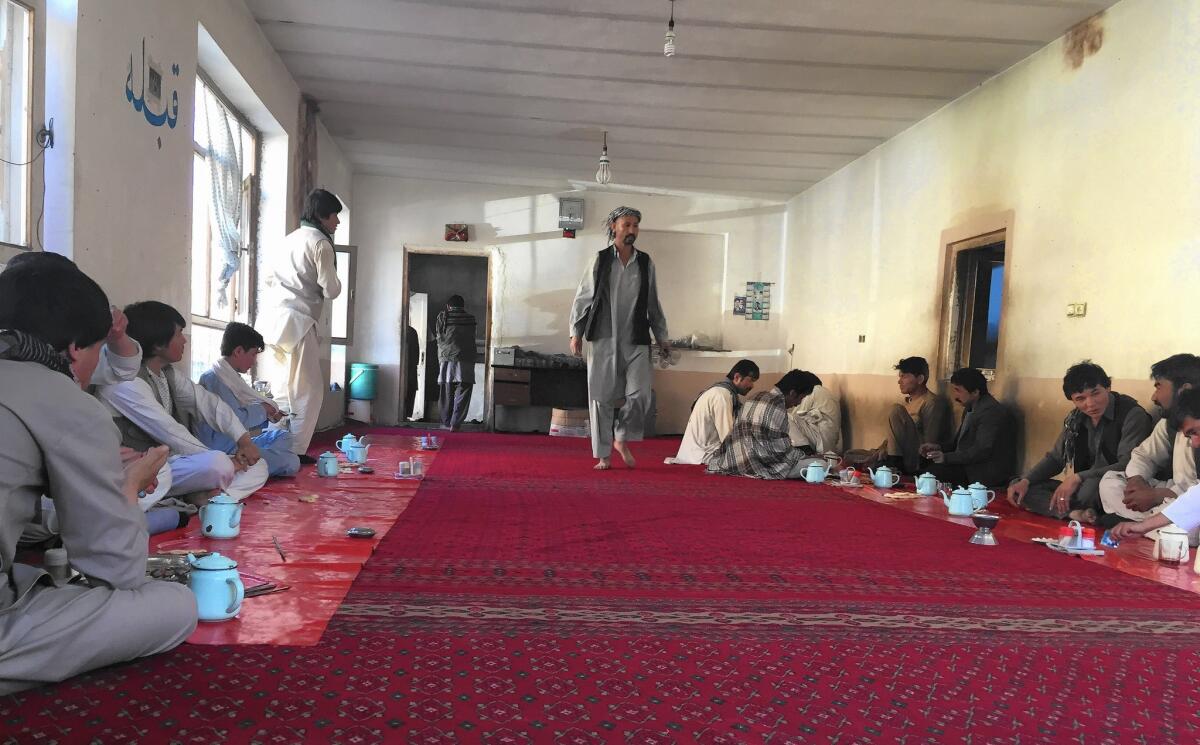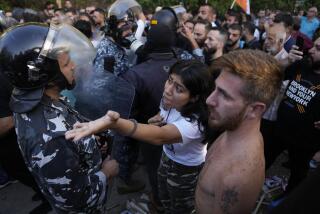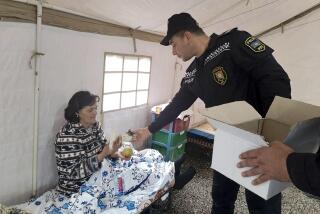Deciding on the road not taken in Afghanistan

- Share via
Reporting from Jalrez, Afghanistan — As soon as he sees the brightly colored storefronts of fruit sellers and general merchandisers on this small stretch of road, Gholam Karbalai knows he is safe.
Karbalai relaxes as he whizzes past the orange and pink exteriors in his green Toyota hatchback. He’s just made it through 12 precarious miles of what is one of Afghanistan’s most dangerous highways.
Karbalai, 55, has been driving passengers between Kabul and the central province of Bamian for 12 years. Bamian, about 80 miles west of the Afghan capital, is widely considered one of the nation’s safer areas, but getting there by road — the way most Afghans travel, considering the cost of the thrice-weekly flights — requires choosing between two of the most dangerous roadways in the war-racked country.
The once relatively safe northern route entails a six-hour journey across the scenic landscapes of Parwan province, but includes a 50-mile stretch through the Ghorband valley, where the Taliban and the Hezb-i-Islami and Jamiat-i-Islami militias vie for control.
The southern route takes less than four hours through Wardak, long regarded one of Afghanistan’s most dangerous provinces. The scariest 12-mile stretch, west of the provincial capital, Maidan Shahr, is replete with gaping craters caused by roadside bombs. The fear doesn’t lift until the car reaches the town of Jalrez.
Navigating battle-scarred Afghanistan is a constant process of evaluation and adaptation. In recent weeks, as Taliban insurgents and their affiliates have stepped up an offensive in northern Afghanistan, Karbalai and many other drivers have abandoned the picturesque northern highway and are traveling the rarely used Wardak route, once dubbed “Death Road” for the frequency of Taliban attacks.
Now, Karbalai says, “it’s only 20 or 30 minutes of worry, then you’re fine.”
After a recent journey, he told a passenger that he hadn’t traveled through Ghorband in two or three weeks. Officials say that Ghorband has become something of a rest and recovery center for Afghan and foreign Islamist militants readying themselves for future battles.
Ghulam Bahauddin Jeelani, chairman of the Parwan provincial council, an elected advisory board, agreed that security had deteriorated. Recently, his convoy of armored cars, including a 300-strong contingent of Afghan security forces, came under attack while traveling through Ghorband to Bamian for ceremonies marking the province’s selection as cultural capital of the South Asian Assn. for Regional Cooperation.
Returning to Kabul a few days later, he said, the convoy was stuck for an hour because of a firefight in the area.
Jeelani said the foreign and local dignitaries had turned the road into a high-value target for the Taliban during the militants’ spring offensive. He said he has raised the issue of security in the Ghorband valley with President Ashraf Ghani’s national security council.
“This is a problem of the central government,” Jeelani said. “They must rally their forces.”
Along the southern route, Karbalai drove past base after base belonging to the Afghan National Security Forces, but pointed out that police or soldiers were not visible.
“They can’t step outside,” Karbalai says. “If they do, they will be killed on sight.”
It wasn’t until they reached Jalrez that he and his passengers saw Afghan forces standing guard on the streets.
The physical state of the road does little to ease the fear of passengers who pay Karbalai about $11 for the one-way ride (about one-tenth the cost of a flight). Ehsanullah, 27, who goes by one name as many do Afghans, said he had traveled the same road just four days earlier and remained amazed by the giant chunks carved out of the ground by explosives, as if with a knife. He counted at least 10 such blast sites within a few feet of one another.
“It’s completely tattered,” he said.
United Nations statistics say that roadside bombs planted by insurgents are the second leading cause of civilian casualties in the Afghan conflict.
Though much of Wardak province is regarded as a Taliban stronghold, Karbalai said he has little fear of the nation’s largest armed opposition movement.
“I’ve encountered them numerous times in Ghorband and here, but if you have no visible connection to the government they let you go,” he said. “They’ve never so much as uttered a bad word to me.”
What passengers and drivers truly fear is finding themselves caught in the middle of a clash.
“If there is fighting you just try to escape. There is nothing else you can do,” said another passenger, Jawid, 25, who narrowly escaped injury during a clash while traveling through Wardak last winter.
Karbalai can point to battle scars of his own. His front windshield and hood suffered damage in an attack six years ago in Ghorband.
Asked how he chooses between two precarious routes, Jawid said the security situation has left him with little choice.
“Whichever one is safer at the time, that’s what we take,” he said. “But no road can keep you from death.”
Latifi is a special correspondent.
More to Read
Sign up for Essential California
The most important California stories and recommendations in your inbox every morning.
You may occasionally receive promotional content from the Los Angeles Times.










